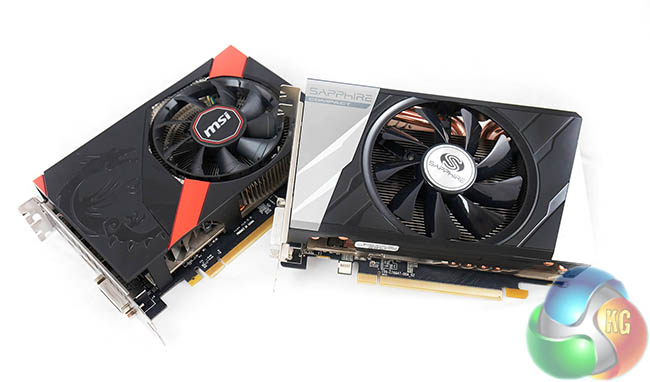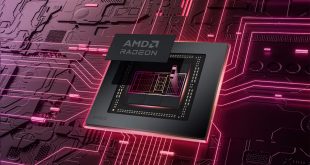If you are building a new Mini ITX system then the graphics choices can be limited. Two of the leading solutions on the market right now are the MSI GTX760 Gaming Mini ITX and the Sapphire R9 285 ITX Compact. Both of these diminutive cards ship in a moderately overclocked state with custom coolers. Both solutions are priced below the £200 ‘sweet spot', but how do they compare?

The R9 285 was a recent release by AMD and we covered multiple reviews of partner cards on launch day back at the start of September. The R9 285, along with the R9 290/X and R7 260X features a programmable audio pipeline. This TrueAudio technology is designed for game audio artists and engineers, so they can ‘bring their artistic vision beyond sound production into the realm of sound processing’.
The R9 285 is a 256 bit architecture design, which seems like a downgrade when compared directly to the 384 bit R9 280. AMD however are using a lossless delta colour compression (DCC) algorithm to get a 40% efficiency improvement. The colour data is being stored in a lossless compressed format using delta encoding – this is handled automatically on the fly.
Geometry performance has improved dramatically over the older part. Their 4xPrim rate has improved tessellation (2-4x) when compared to the R9 280. They have managed to enhance performance from improving their work distribution between geometry front end units and improved vertex re-use when dealing with many small triangles.
Multimedia areas have been improved including a new Unified Video Decoder which provides a full fixed function decode engine with support for H.264, VC-1, MPEG4, MPEG2 and MJPEG. It also adds support for high frame rate 4K H.264 content (High Profile Level 5.2). The new Video Coding Engine provides (up to) 12x faster than real time encoding for full HD and support for 4K resolutions.
The Sapphire R9 285 ITX Compact is available from Overclockers UK for £199.99 inc vat.
Nvidia's GTX760 is getting a bit long in the tooth and is due for replacement to bring it into line with the latest Maxwell hardware. Still, it is a big seller for Nvidia and is widely available online. This card was a direct replacement for Nvidia's GTX660 ti back in June 2013. The basespeed of the solution at launch was 980mhz, however as we will see the MSI GTX760 Gaming Mini ITX has received a moderate clock increase to deliver extra performance.
The MSI GTX760 Gaming Mini ITX is available from Amazon with a recent price reduction to £175.59 inc vat.
| GPU | MSI GTX760 Gaming Mini ITX | Sapphire R9 285 ITX Compact |
| Shaders | 1152 Cuda Cores | 1792 Stream Processors |
| Base Clock (mhz) | 1006 | 928 |
| GPU Boost Clock (mhz) | 1072 | // |
| Pixel Fillrate (GPixel/s) | 32.2 | 59.4 |
| Texture Units | 96 | 112 |
| Texture fill-rate (GTexel/s) | 96.6 | 103.9 |
| Memory Clock (mhz) | 1502 | 1375 |
| ROPs | 32 | 64 |
| Bus Width (bit) | 256 | 256 |
| Bandwidth (Gb/s) | 192.3 | 176.0 |
The AMD card on paper looks more powerful, especially when factoring in the 64 ROP's and 112 texture units – compared to Nvidia's 32 ROP's and 96 texture units. The GTX760 definitely has a edge in regards to memory performance/bandwidth, so it will be interesting to see how both MINI ITX solutions stack up in the real world tests.
First let us take a closer look at both cards.
 KitGuru KitGuru.net – Tech News | Hardware News | Hardware Reviews | IOS | Mobile | Gaming | Graphics Cards
KitGuru KitGuru.net – Tech News | Hardware News | Hardware Reviews | IOS | Mobile | Gaming | Graphics Cards



Why are many reviewers of the R9 285 card saying that it has 32 ROPs when it has 64 ROPs? (GPU-Z) its funny because they state that it has 32 ROPs and they have a picture of GPU-Z saying 64 in the same page lol
The fact that the Sapphire card is able to consume so much more power and stay cool and quiet while being that size really is quite impressive, and I hope it means we see more high-end cards in that form factor. But yeah also means the new 970 ITX that’s coming will likely stomp it quite badly, 20nm can’t come soon enough!
970 is in other range of performance, but product and price too. it would be more comparable to a itx 960 or 950 ti.
That is very fair and I must admit I didn’t even consider what the price difference is, I was mainly thinking from a performance in ITX perspective.
I have this exact problem: GPU-z the latest version says 32 ROPs whereas most of the online reviews of the R9 285 ITX state 64 ROPs. Does anyone have a clue what the issue is here? Software bug in GPU-z? Thanks.